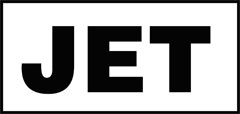
WASHINGTON (AP) — U.S. employers extended their solid hiring into July by adding 209,000 jobs. It was the sixth straight month of job growth above 200,000, evidence that businesses are gradually shedding the caution that had marked the 5-year-old recovery.
July’s gain was less than in the previous three months, though, and probably wasn’t strong enough to intensify fears that the Federal Reserve will soon raise interest rates to curb inflation.
But the Labor Department’s monthly jobs report Friday pointed to an economy that has bounced back with force after a grim start to the year and is expected to sustain its strength into 2015. Along with the consistent job growth, consumer spending is rising, manufacturing is strengthening and auto sales are up.
In early trading Friday morning, stock market indexes were mixed. The yield on the 10-year Treasury note dipped, suggesting less concern about a Fed rate increase.
The unemployment rate ticked up in July to 6.2 percent from 6.1 percent as more Americans started looking for work. Most didn’t find jobs, but the increase suggests that they’re more optimistic about their prospects. The jobless aren’t counted as unemployed unless they’re actively seeking work.
Average job gains over the past six months reached 244,000 in July, the best such average in eight years.
“Job growth slowed in July after heated gains in the past three months,” Sal Guatieri, senior economist at BMO Capital Markets, noted in a research note. “But hiring trends remain solid, reflecting a strengthening economy.”
The pickup in hiring has yet to translate into larger paychecks for most Americans, a key factor that has hobbled the recovery. In July, average hourly earnings ticked up just a penny to $24.45. That’s just 2 percent higher than it was 12 months earlier and is slightly below current inflation of 2.1 percent. In a healthy economy, wages before inflation would rise 3.5 percent to 4 percent annually.
The proportion of working-age adults who either have a job or are looking for one rose slightly in July from a 35-year low to 62.9 percent. It was the first increase in four months.
Weak pay gains are restraining the housing market, usually a key driver of growth. A measure of signed contracts to buy homes slipped in June, the National Association of Realtors said this week. That suggests that home sales will decline in coming months.
The weak pay growth suggests that “the labor market still has far to go before it is fully healed,” Michael Dolega, senior economist at TD Economics, wrote in a note to clients. “Lack of wage gains leaves the Fed with a strong case for keeping rates low for the next several quarters.”
Still, Friday’s report echoes other data that point to an improving economy. Growth accelerated during the April-June quarter, the government said Wednesday, after contracting sharply in the first three months of the year. Last quarter’s rebound assuaged fears that growth was too weak to support this year’s rapid hiring.
And on Friday, the government said consumer spending and income picked up in June. A separate report showed that manufacturing expanded in July at the fastest pace in more than three years as new orders surged, production rose and factories ramped up hiring.
Investors remain anxious about whether the broad economic gains will lead the Fed to raise its benchmark short-term rate sooner than expected. Such fears likely contributed to Thursday’s 317-point plunge in the Dow Jones industrial average — its worst day since February.
In addition to reporting July’s solid gain, the government on Friday revised up its estimate of the job increases in May and June by a combined 15,000.
Higher-paying jobs showed strong increases in July. Manufacturing added 28,000 jobs, the most in eight months. Construction added 22,000 and financial services 7,000, its fourth straight gain.
In the April-June quarter, the economy expanded at a seasonally adjusted 4 percent annual rate after a steep 2.1 percent contraction in the first quarter. Americans stepped up their spending, particularly on autos, furniture and other big-ticket items. Businesses also spent more on plants, office buildings and equipment.
Americans are also gradually gaining confidence in the economy, which means spending could accelerate in coming months. The Conference Board’s consumer confidence index jumped to its highest level in nearly seven years in July.


